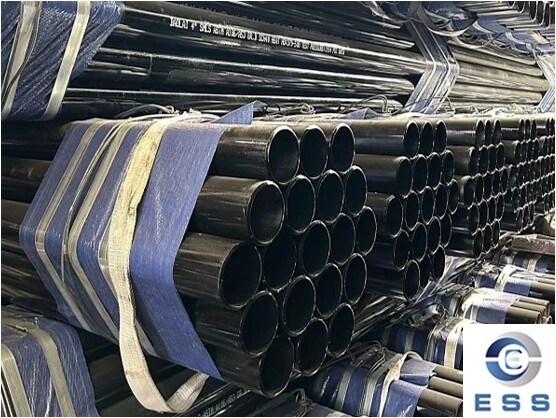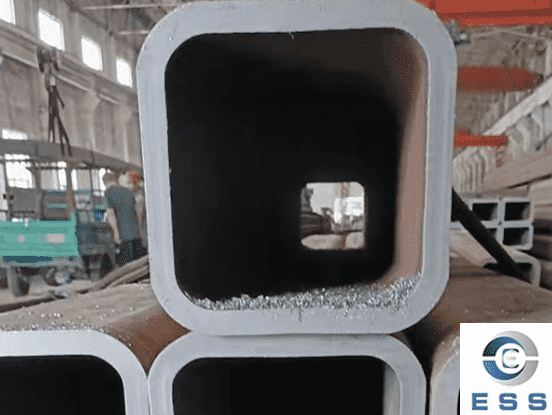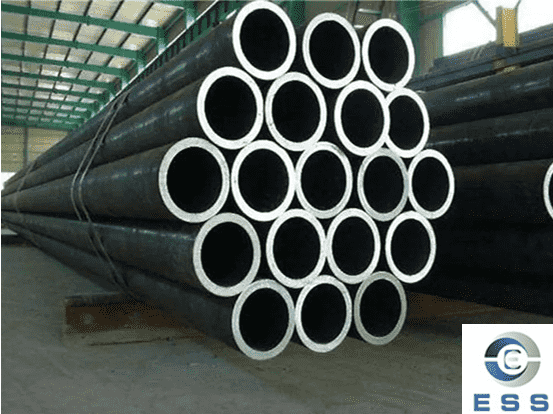
The seamless
pipe is widely used in petrochemical, fertilizer, machinery, aviation and
other fields due to their excellent pressure resistance and high temperature
resistance, such as seamless precision
tube, seamless hydraulic
tube, etc. The grade classification of seamless pipes is determined
according to the production process and related chemical composition when
manufacturing seamless pipes. According to the provisions of the national
standard GB/T14975-2002, the grades of seamless pipes can be divided into five
grades, namely A, B, C, D, and E, with the grades increasing in sequence.
Classification of seamless pipe grades
1. Grade A seamless pipe
Grade A seamless pipes have relatively high
chemical composition requirements, and their heat treatment quality and
mechanical properties are also required to be high. They are mainly suitable
for the manufacture of high-pressure pipeline, boiler
tube and high-pressure gas cylinder. Common Grade A seamless pipe materials
are: 10#, 20#, 12CrMo, etc.
2. Grade B seamless pipes
Grade B seamless pipes have lower chemical
composition and mechanical property requirements, and the production process is
relatively simple. They are mainly suitable for general pressure occasions,
such as medium and low pressure pipelines and structural pipes. Common B-grade
seamless pipe materials include: 10#, 20#, Q345B, etc.
3. C-grade seamless pipe
The chemical composition and mechanical
property requirements of C-grade seamless pipe are slightly higher than those
of B-grade, but slightly lower than those of A-grade. It is mainly suitable for
general pressure occasions, such as machinery manufacturing and general
engineering pipelines. Common C-grade seamless pipe materials include: 10#,
20#, 35#, etc. In some occasions where there are certain performance
requirements but do not need to meet the A-level standard, such as the
manufacture of certain specific heat exchanger components or general pup joints,
Grade C seamless pipes are a more appropriate choice.
4. D-grade seamless pipe
D-grade seamless pipe is mainly suitable
for occasions where low-pressure fluids are transported. Its chemical
composition and mechanical property requirements are relatively low. It is
generally used for water supply and drainage pipelines and low-pressure
transmission pipelines. Common D-grade seamless pipe materials include: 10#,
20#, etc.
5. E-grade seamless pipe
E-grade seamless pipe is mainly suitable
for occasions such as transporting oil well slurry. Its chemical composition
requirements are relatively high and its mechanical property requirements are
relatively low. It is suitable for oil well slurry transportation and downhole
pipelines. Common E-grade seamless pipe materials include: E75, X95, etc.
Related parameters of seamless pipes of
different grades
The following table lists the main
parameters of seamless pipes of different grades:
|
Grade
|
Outer diameter (mm)
|
Wall thickness (mm)
|
Nominal pressure (MPA)
|
|
A
|
≤610
|
>35
|
Variable
|
|
B
|
≤711
|
>35
|
≤20
|
|
C
|
≤711
|
>35
|
≤20
|
|
D
|
≤711
|
>10
|
≤3.2
|
|
E
|
≤711
|
>10
|
Variable
|
Note: "Variable" in the table
means that the nominal pressure can be adjusted according to the actual working
conditions and specific material properties.
Summary and purchase suggestions
The grade classification of seamless pipes
is one of the important indicators when manufacturing seamless pipes. Seamless
pipes of different grades are suitable for different pressure and temperature
occasions, and their chemical composition and mechanical properties are also
different.
1. Grade A: Suitable for high temperature
and high pressure environments, such as high pressure gas cylinders, high
pressure pipelines, etc.;
2. Grade B and Grade C: Mostly used in
general pressure occasions, meeting the needs of medium and low pressure and
conventional engineering;
3. Grade D: Suitable for low pressure fluid
transportation, such as water supply and drainage systems;
4. Grade E: Adapt to special working
conditions, especially those involving corrosive media (such as oil well
slurry).
When purchasing seamless pipes, it is
necessary to select the appropriate grade and material according to the actual
use occasions, working conditions and safety standards to ensure the safety and
economic benefits of equipment operation.
Read more: Carbon Steel Seamless Pipes Specifications or Seamless Steel Pipe Sizes













 Eastern Steel Manufacturing Co.,Ltd not only improve product production and sales services, but also provide additional value-added services. As long as you need, we can complete your specific needs together.
Eastern Steel Manufacturing Co.,Ltd not only improve product production and sales services, but also provide additional value-added services. As long as you need, we can complete your specific needs together.










